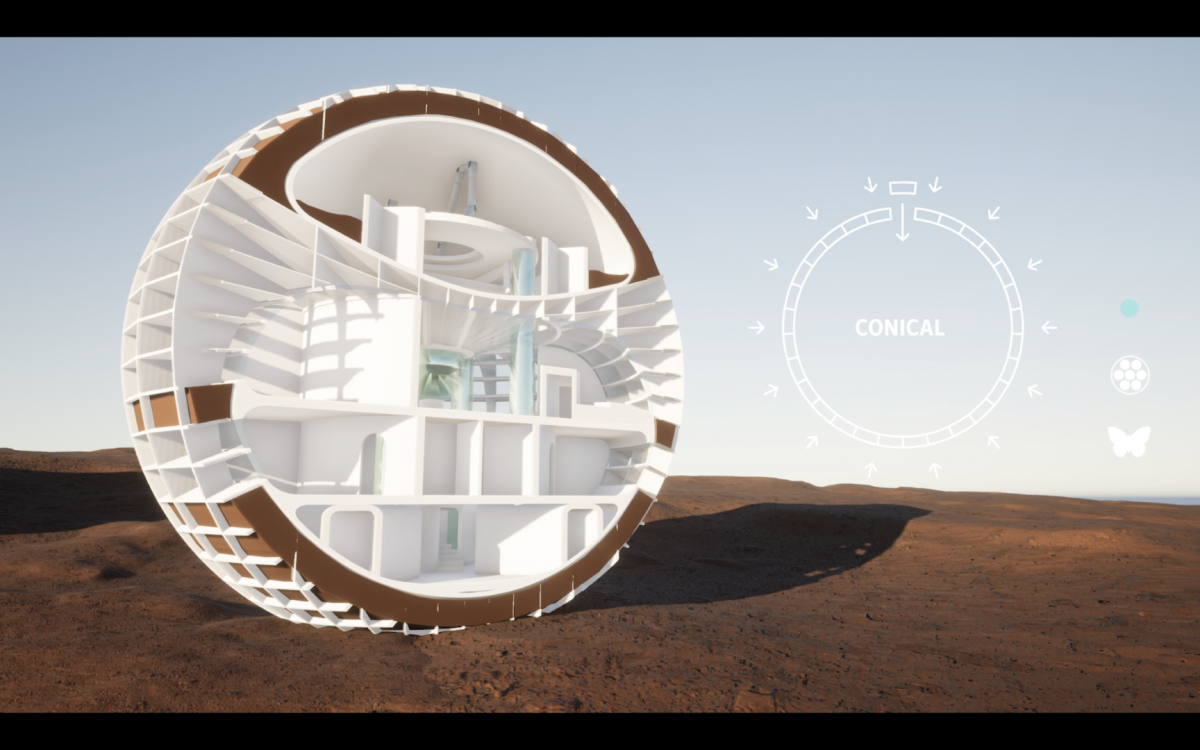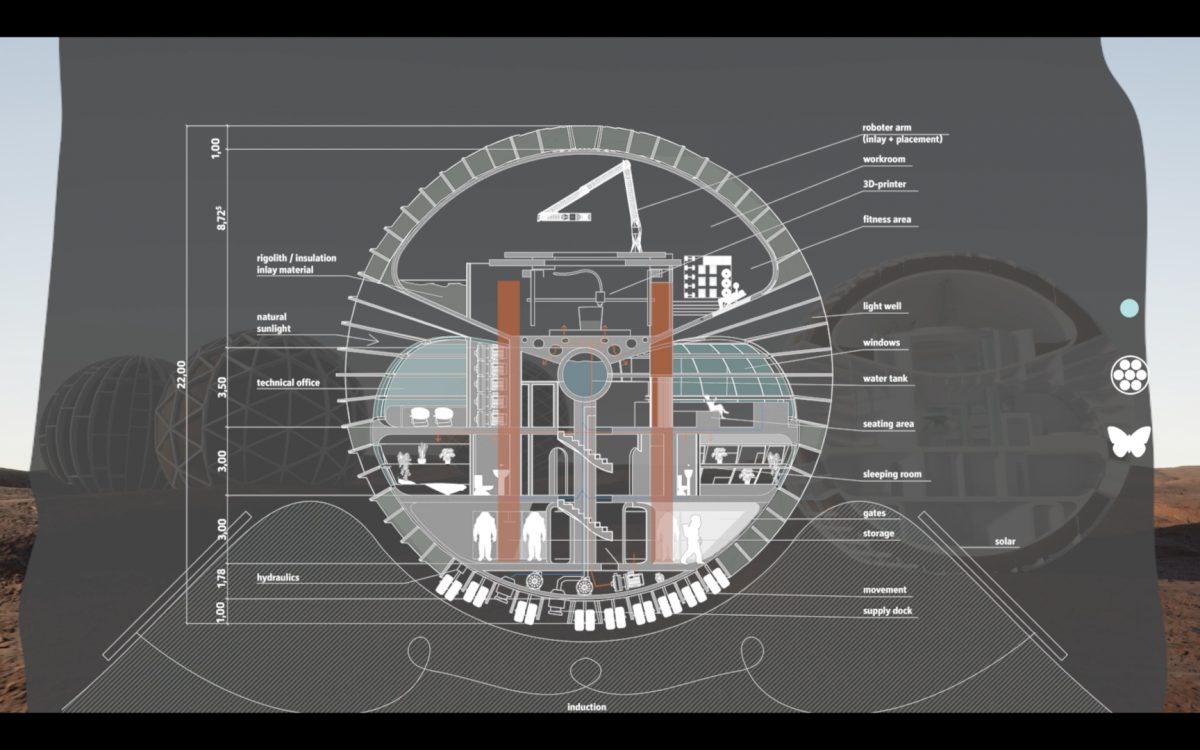
Ben Meiners & Calvin Kiehl
The Hedgehog
What are we up to? Life on Mars with 1 million people by 2075
But how are we going to manage life on this new, inhospitable planet? For that, it’s worth looking back at our own history.
We, too, started out small, as single-celled organisms that cavorted in the growing world. They represented a first form of life that gradually adapted and benefited from ever better living conditions. From this arose transitional forms of life in which the first unicellular organisms joined together and survived as a community, This coexistence took on completely different forms, yet one thing stands out: The individual forms the group, remains recognizable and flexible.
We have dealt with this history and survival approach and based on the told we have designed a life on Mars according to this principle and teachings.
For this we divide the steps to life on Mars into 3 phases. Preparatory, before our actual arrival, the necessary infrastructure and supply rooms are built with the help of intelligent robots. In the following first main phase we travel after humans. On the new planet we are vulnerable, small single-celled organisms, which must establish themselves fundamentally first on Mars and survive. To be able to grow we want to create optimal conditions and security.
To do this, we make use of the conditions or special features of the Red Planet. As on Earth, there are seasons on Mars. Due to the thin atmosphere this is hardly comparable, but this fact offers a chance for our young life. By mobility and supply security we escape the extremely cold winter as well as the stormy springs and settle during the establishment phase always in the warmer areas. This is supported by the warmer temperatures as well as increased hours of sunshine for energy production. The summer on Mars is about twice as long as on Earth and can also be reached faster due to the approximately half circumference from Mars to Earth. This mobile life creates an initial, elementary infrastructure that is critical to the exploration and colonization of the new planet. Transport routes and supply will be independent and safe from external conditions underground, while Martian life will take place above.
The Hedgehog itself is made of two main components: HDPE and regolith. Due to the pressure conditions on Mars, a round shape was chosen to be pressure stable and protect our pioneers. A shape that reacts to the solar radiation of 30°, creates 2 areas inside, which we divide into a working area and a living area as different pressure zones. The living area is in turn divided into living, sleeping and technical/storage/transfer areas. These are arranged according to the solar input in the Hedgehog.
As with the envelope, security plays a major role in the interior. To this end, the communal and private spaces, laid out in organic forms, are equipped with compartmentalized security systems, allowing residents to escape to other, separate areas in the event of an emergency, such as a damaged building block.
Hedgehogs can linger in a resting place to clear traffic routes and pick up energy, food, etc., if necessary, and be supplied by a transport pod. For larger social events, there are fixed pods that the unicellulars can connect to. These larger PODs stand year-round as base stations in their respective locations, providing initial outposts and fixed points for the growing population.
After the people have established themselves more firmly with this tactic over 40 Mars years, the next transition into the subsequent phase takes place step by step. This generation, which is characterized by mobility, now manages to fill in semi-fixed structures as a community, if necessary, but without giving up their individual freedom and also security. Thus completely different structures form on the new planet, which permit first place-typical differences, are however further coined by the wandering and the desire for discovering and reject for the time being firm structures.
Within the next hundred years the humans or rather Martians become more and more successful and take Mars further. But which development step follows from the transition phase? About it we can only speculate, perhaps they remain eternally mobile or find themselves at a time in permanent structures again. However, we hope that you have enjoyed the first 140 years on Mars and are happy to speculate with you how the next stage of development of the Martians or as they call themselves until then, looks like.
CONCEPT









DETAILS




VISUALS






